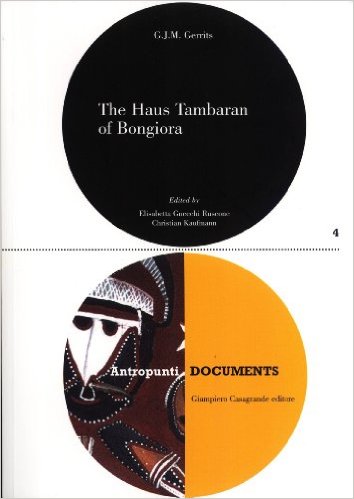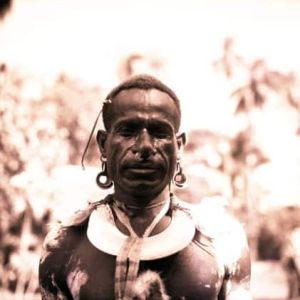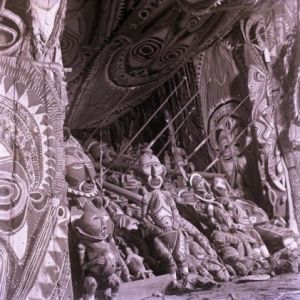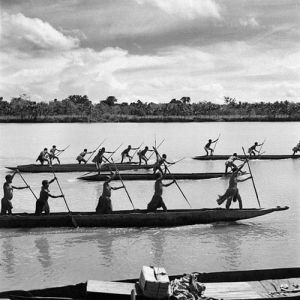HELENEUM – LUGANO
The temporary exhibition “Haus tambaran” takes its name from the large ceremonial house, at once cathedral, parliament and theatre, that characterises the villages of New Guinea and is, in a way, not only its topographical but also its ideological, artistic and religious centre. On display at the Heleneum are 37 unpublished photographs by Dadi Wirz, which are part of a collection of over 800 negatives taken during his travels in Papua New Guinea between 1952 and 1955, and now deposited at the MUSEC Research and Documentation Centre. This is an integrated project that presents to the public not only the fascinating reportage, but also the first results of a broader activity, which find their first synthesis on this occasion. The temporary exhibition is, in fact, accompanied by the publication of Fred Gerrits’ The Haus Tambaran of Bongiora, the result of research begun in 1972. The subject of the painstaking research carried out by Gerrits, with the collaboration of his wife Nel and a group of leaders from the Abelam villages of Bongiora and Kuminibis (Papua New Guinea) was the ideological system that intimately links the ceremonies and forms of a traditional art, documented and interpreted in the historical moment of their last vitality.

Fred Gerrits
Fred Gerrits was born in 1933 in Bandung, Indonesia. After obtaining his medical degree in Holland, he settled in Papua New Guinea, where he met, and later married, his wife Nel. From 1964 Fred and Nel worked in several hospitals until Fred was appointed Provincial Leprosy and Tuberculosis Control Officer for West and East Sepik provinces, based in Maprik. Their interest in anthropology and photography led the Gerrits, from the early 1970s, to conduct a systematic collection of evidence of the cultures of the Maprik, Angoram and Trobriand Islands regions, delving into previously little-known themes and topics through a long field presence in regions of intense artistic vitality. Moving first to Kenya and then to Nepal, they eventually settled in Australia, where Fred worked until his retirement as a consultant for international health organisations in South East Asia and the Pacific.
Dadi Wirz
Dadi Wirz was born in 1931 in Papua New Guinea. He spent his childhood and youth in a constant wandering, alongside his father Paul engaged in his research in different parts of the world. After studying photography in Basel and later in Paris, he moved to Brazil, in search of languages that could stimulate his creative experience. After the death of his father in 1955, he returned several times to Papua New Guinea, to carry out his research and portray a world that he felt had reached its twilight. From the 1970s he then lived in Morocco, Portugal and England, devoting himself to his work as a multifaceted artist: engraver, painter, sculptor as well as photographer. He has taught at the Schule für Gestaltung in Basel, the Ecole du Louvre in Paris, the Ohio State University, the Rhode Island School of Design in Providence (USA), the Museu de Arte Moderna in Rio de Janeiro and numerous other universities.






